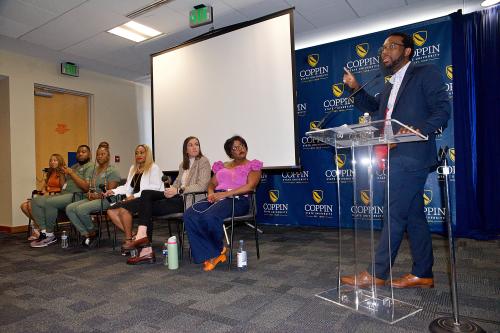Most of the fastest growing metropolitan areas are located on the coasts. What do they have in common? Almost always, the most successful cities excel at entrepreneurship.
As a group, such metro areas have found ways to foster job creation for their residents by amassing entrepreneurs and the early-stage financing that supports the process of company formation and scale-up.
Which is why the recent State of the Heartland Factbook, published by Brookings and the Walton Family Foundation, looks closely at Heartland states’ and metro areas’ current shares of employment at young firms (five years old or less) as a core indicator of economic vitality. The higher the share, the fact book asserts, the greater the potential for future economic growth.
The Factbook finds that overall, many places in the Heartland excel on young-firm growth, but more must be done to develop entrepreneurial awareness and the skills necessary to exploit opportunities.
Entrepreneurs are vital in a world with rapid technological change because they so often see the potential in newly developed intellectual properties and produce ideas for business models. Because entrepreneurs are not burdened by past personal and corporate institutional biases, they can recognize and capitalize on new opportunities. In that sense, while today’s innovative stalwarts are at the technology production frontier, many firms will stagnate or disappear as technological change disrupts their business model. Places with entrepreneurs engaged in transforming research prowess into commercially viable technology-based products or services in the marketplace can stay ahead of those dynamics and keep generating new, good-paying jobs.
While today’s innovative stalwarts are at the technology production frontier, many firms will stagnate or disappear as technological change disrupts their business model.
The impact of entrepreneurship on economic growth, and on job creation in particular, is not immediate. Researchers focused on entrepreneurship have found that the most important growth effects of startup firms can take up to 10 years to occur. For that reason, regions need to continuously foster a supportive entrepreneurial community.
So how are Heartland places doing on entrepreneurship? Overall, only middling: Young firms in the 19 Heartland states represented just 9.0 percent of total employment in 2016, while non-Heartland states had an 11.6 percent share.

Between 2010 and 2016, Heartland states witnessed a decline of 65,000 jobs at young firms, while non-Heartland states experienced a gain of 220,000. Such trends explain much of the lower growth in total employment that Heartland states experienced in in recent years.
Young firms in the 19 Heartland states represented just 9.0 percent of total employment in 2016, while non-Heartland states had an 11.6 percent share.
North Dakota, driven in part by the Bakken Formation oil-exploration explosion, witnessed the fastest average annual growth in young-firm employment both in the Heartland and nationally between 2010 and 2016, at 4.2 percent. Nebraska was second in the Heartland and fifth-fastest nationally with 2.2 percent annual job growth at young firms 2 percent between 2010 and 2016. These states’ growth rates ranked very high nationally, but Heartland states like Louisiana, Arkansas, and Iowa actually lost jobs at young firms.
Turning to the region’s urban communities, the story also varies. Among larger metro areas in the Heartland, Milwaukee and Nashville, Tenn. experienced 3.1 percent average annual job growth at young firms over the 2010-2016 period. Close behind was Omaha, Neb. with average annual growth of 2.9 percent, all considerably higher than the 0.5 percent large-metro average for the region as a whole. Rounding out the bottom of the large metro rankings was Little Rock, Ark. (-2.2 percent); Grand Rapids, Mich. (-2.4 percent); and Toledo, Ohio (-3.1 percent).

Meanwhile, some smaller places are excelling in entrepreneurship. In a study that I co-authored earlier this year examining Micropolitan Success Stories in the Heartland, Findlay, Ohio; Brookings, S.D.; Oxford, Miss.; Jasper, Ind.; and Ardmore, Okla. all emerged as top performers. These micropolitan areas combine four factors for young-firm success: (1) entrepreneurial awareness with the capacity to execute accordingly; (2) an enlightened economic development philosophy that recognizes the vitality of entrepreneurs and small businesses to long-term vibrancy and dynamism; (3) public-private partnerships to provide support services for all levels of entrepreneurs; and (4) investors willing to place capital in startup firms with a good business plan. Beyond these, many of these communities boast the presence of successful female entrepreneurs. Brenda Stallings pioneered Matrix Telecommunication, a technology solutions firm, in Jasper, Ind. In 1979. Today, Matrix employs nearly 100 engineers, business professionals and solutions architects.
Ultimately, sustained job creation in the Heartland will depend largely on creating more opportunity for entrepreneurs. Time will tell whether leaders in the region heed the call to embrace young firms as the key to unlock future high-quality growth.







Commentary
Entrepreneurs are key to reigniting the Heartland’s economy
February 28, 2019